Integrating AI-Driven Insights into Sales and Operations Planning (S&OP)
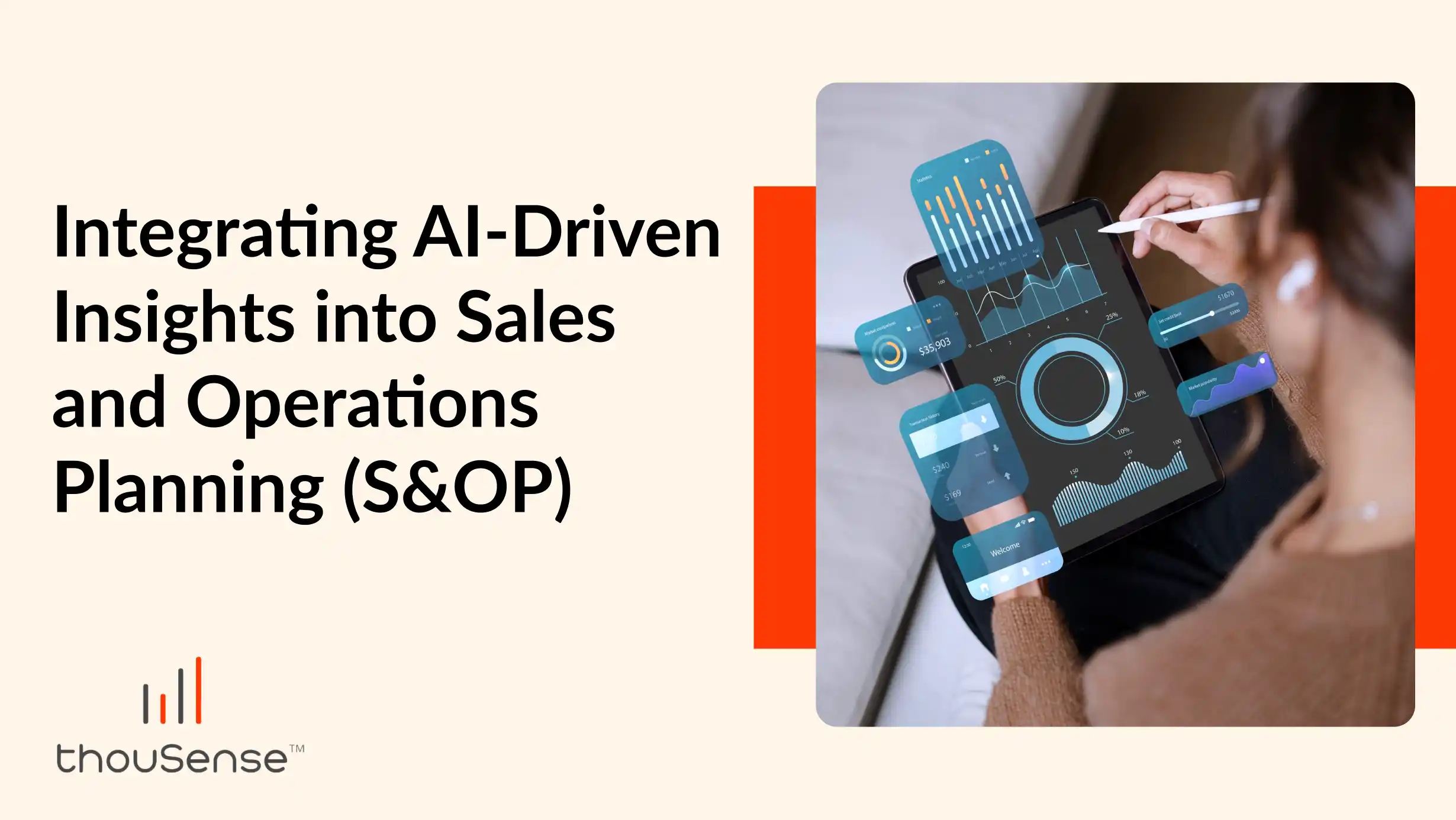
AI-driven S&OP leverages artificial intelligence to enhance the planning and decision-making process. Unlike traditional S&OP, which relies heavily on historical data and human judgment, AI-driven S&OP analyzes vast amounts of data in real-time—key technologies such as machine learning, predictive analytics, and natural language processing power this transformation.
Rather than replacing human expertise, AI complements it by uncovering insights that humans may miss. For example, tools like thouSense simplify the complexities of S&OP by identifying trends, predicting demand, and optimizing operations effectively. In this article, we will explore the benefits, challenges, and best practices for implementing AI in S&OP.
5 Key Benefits of AI in Sales and Operations Planning (S&OP)
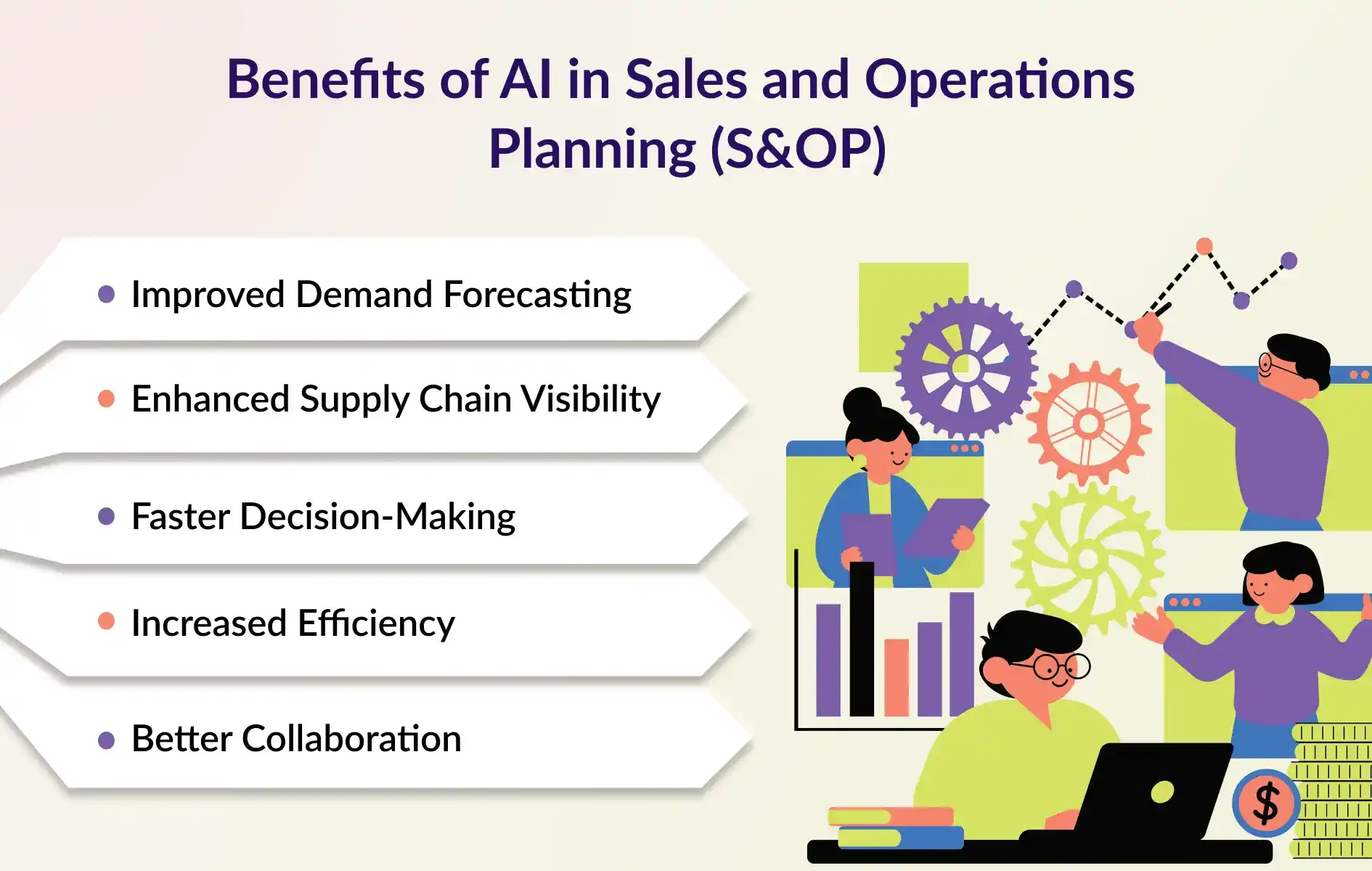
AI offers transformative advantages, addressing forecasting, decision-making, and supply chain management inefficiencies. Let’s examine its key features:
1. Improved Demand Forecasting
AI significantly enhances demand forecasting by analyzing historical data and real-time market dynamics. It identifies patterns that help businesses predict future demand more accurately. This precision reduces the risks of overstocking or understocking, ensuring better inventory management and customer satisfaction.
2. Enhanced Supply Chain Visibility
With AI, businesses gain end-to-end visibility into their supply chains. It helps detect potential disruptions, such as delays or shortages, long before they become critical issues. By addressing these disruptions proactively, companies can maintain smooth operations and reduce downtime.
3. Faster Decision-Making
AI processes large volumes of data at lightning speed, delivering actionable insights in real-time. This speed enables businesses to make quick, informed decisions in response to market changes or operational challenges, giving them a significant competitive edge.
4. Increased Efficiency
AI optimizes resource utilization by improving inventory management and reducing waste. It ensures that materials are used efficiently and production schedules are streamlined, ultimately lowering costs and improving overall productivity.
5. Better Collaboration
AI-powered platforms foster better collaboration by providing a unified source of accurate, real-time data. Teams from different departments can access and work with the same information, breaking down silos and ensuring alignment across the organization.
With these benefits established, let’s explore the advanced tools driving AI adoption in S&OP.
AI Tools Revolutionizing S&OP
Advanced tools like thouSense are changing the way businesses handle Sales and Operations Planning. Using predictive analytics, thouSense helps businesses confidently predict future outcomes. Its demand-sensing feature keeps track of market changes and customer habits, helping in better planning.
The scenario-planning tool lets businesses test different possibilities, so they are ready for uncertainties. These tools give useful insights that help businesses make quicker and smarter decisions.
While these tools offer immense potential, businesses must also address the challenges associated with AI adoption.
How thouSense Simplifies S&OP Challenges
thouSense provides an intuitive, AI-powered platform designed to address common challenges in Sales and Operations Planning. It simplifies data integration by cleaning and processing information from various sources, ensuring accuracy and consistency. Its user-friendly interface requires minimal technical expertise, making it easy for teams to adopt AI tools without extensive training.
With features like predictive analytics and scenario planning, thouSense empowers businesses to make informed decisions in even the most complex situations. By reducing manual efforts and promoting better collaboration, it enables a smooth transition to AI-powered S&OP.
Steps to Integrate AI into Sales and Operations Planning (S&OP)
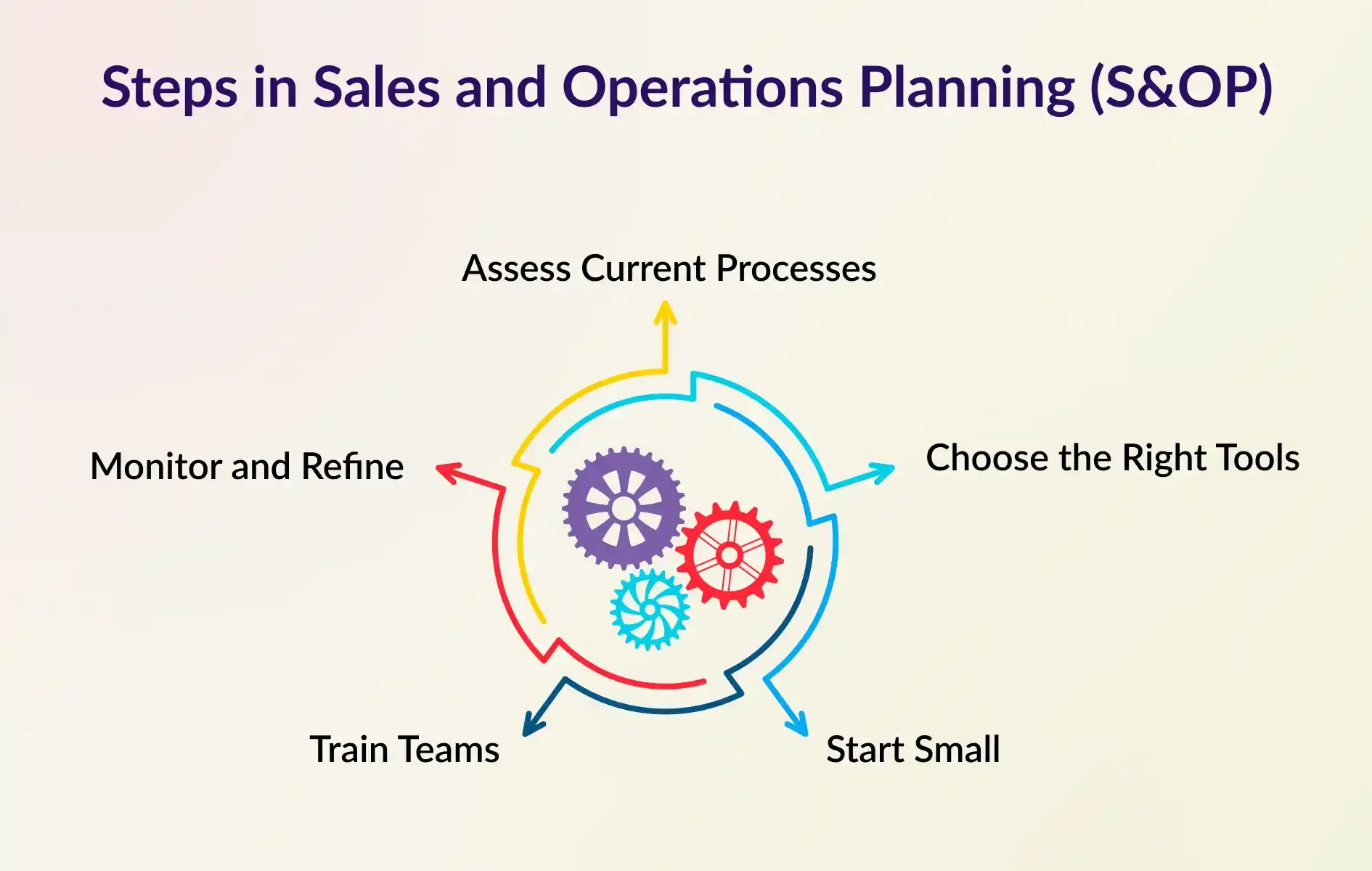
1. Assess Current Processes
The first step is to evaluate existing S&OP methods to identify gaps and inefficiencies. By pinpointing areas where AI can add value, businesses can create a clear roadmap for implementation.
2. Choose the Right Tools
Selecting the right AI tools is crucial for successful integration. Platforms like thouSense, which align with the organization’s goals and requirements, can significantly ease the transition to AI-driven Sales and Operations planning.
3. Start Small
Starting with small-scale pilot projects allows businesses to test AI capabilities and measure their impact before full-scale implementation. This approach minimizes risks and builds confidence in the technology.
4. Train Teams
Educating employees about how to use AI tools effectively is essential. Training sessions help teams understand AI’s role in improving Sales and Operations planning processes and foster trust in its recommendations.
5. Monitor and Refine
AI implementation is not a one-time activity. Regularly monitoring its performance and refining strategies based on insights ensures that AI continues to deliver optimal results over time.
Real-World Applications of AI in S&OP
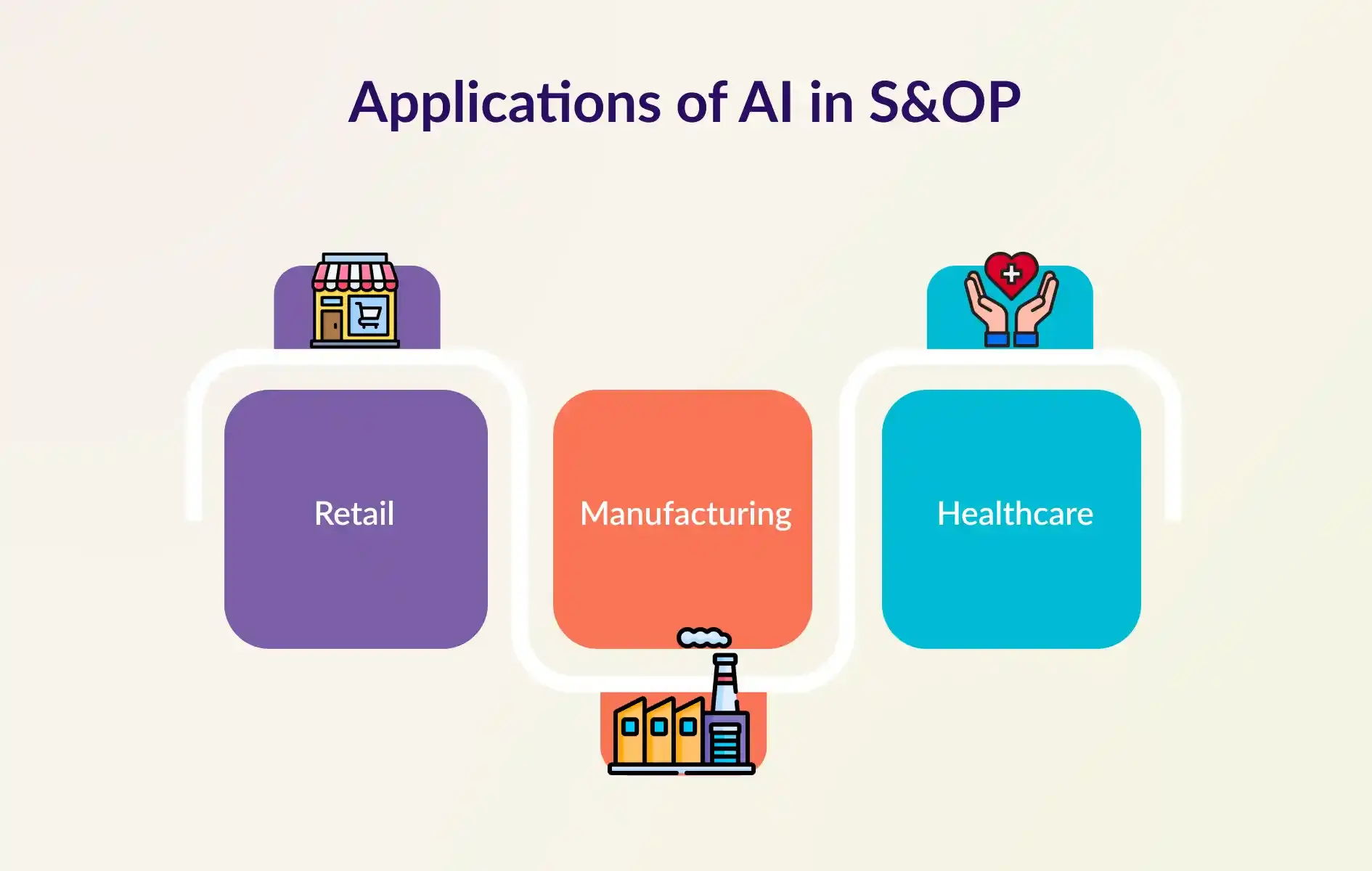
AI is driving innovation across industries, enhancing efficiency and competitiveness in S&OP practices.
● Retail:
AI predicts customer demand with precision, preventing overstocking or stockouts and improving customer satisfaction.
● Manufacturing:
AI ensures a steady supply of raw materials, minimizing production downtime and boosting operational efficiency.
● Healthcare:
AI supports inventory planning for medical supplies, ensuring the availability of critical items when needed.
Best Practices for AI-Powered S&OP
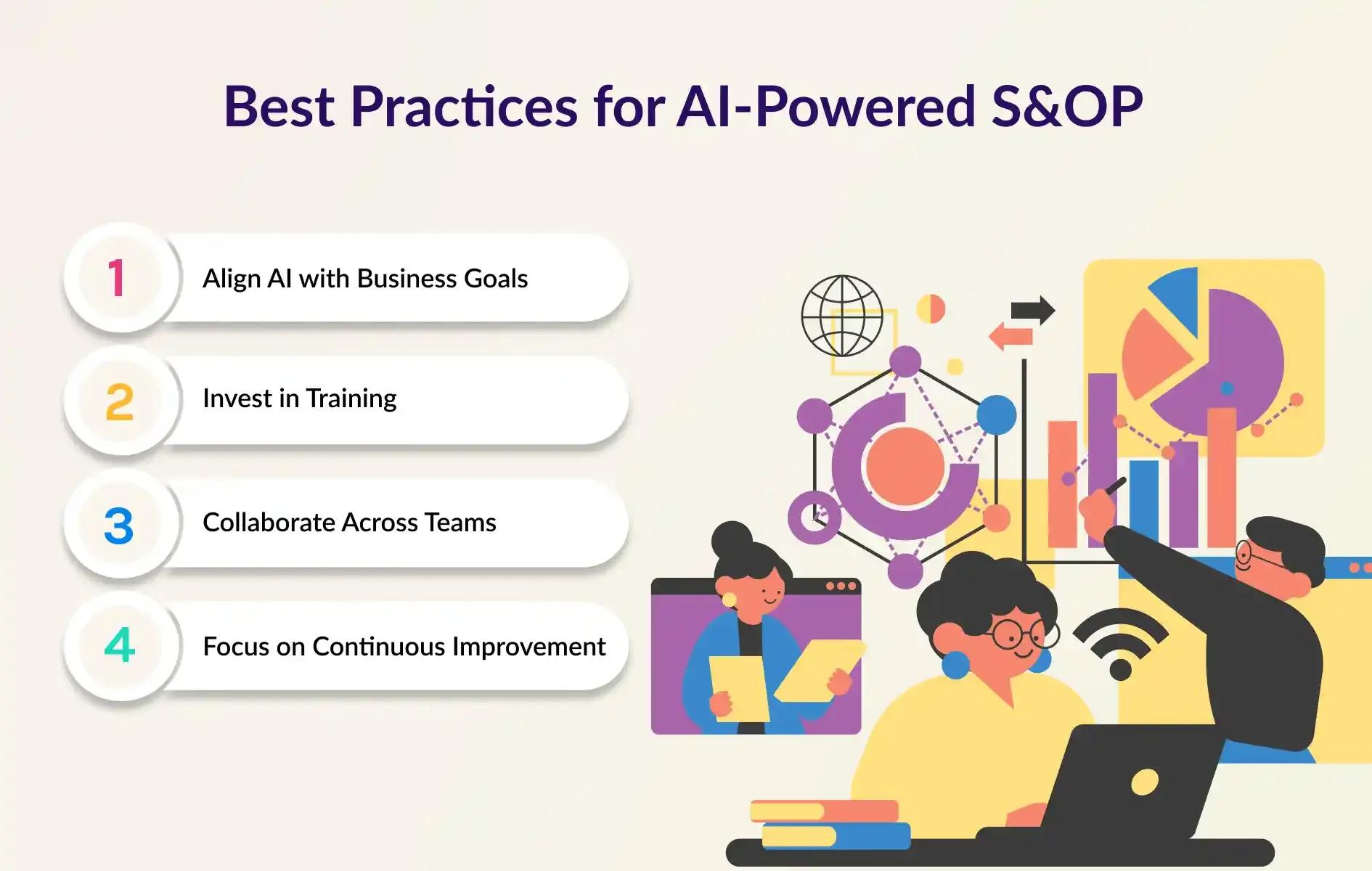
To maximize the benefits of AI in S&OP, businesses should adopt the following best practices:
1. Align AI with Business Goals
AI initiatives should directly support the organization’s overall objectives. Aligning AI strategies with business goals ensures maximum impact and ROI.
2. Invest in Training
Providing comprehensive training equips teams with the skills needed to use AI tools effectively. Well-trained employees are more likely to trust and utilize AI-driven insights.
3. Collaborate Across Teams
AI can break down departmental silos by fostering better collaboration. Encouraging cross-departmental communication ensures that all teams benefit from AI-driven insights.
4. Focus on Continuous Improvement
AI models must be updated regularly to keep pace with market changes. Continuous improvement ensures that the technology remains effective and relevant over time.
Conclusion
Integrating AI into Sales and Operations Planning is no longer a luxury; it’s a necessity for staying competitive. AI-driven insights improve forecasting, enhance supply chain visibility, and increase operational efficiency. Forecasting tools like thouSense make this transformation simpler and more accessible. By adopting AI-powered Sales and Operations Planning solutions, businesses can overcome challenges, seize opportunities, and achieve sustainable growth in a rapidly evolving market.
FAQs
1. What is AI-driven S&OP?
AI-driven S&OP uses artificial intelligence to enhance planning by automating data analysis and decision-making.
2. How does AI improve demand forecasting in S&OP?
AI analyzes historical and real-time data to predict demand accurately, reducing stockouts and overstocking.
3. What are the challenges of implementing AI in S&OP?
Challenges include data quality issues, resistance to change, and high implementation costs.
4. Can AI align cross-functional teams during S&OP?
Yes, AI provides real-time insights that are accessible to all teams, ensuring better collaboration.
5. What role does AI play in scenario planning for S&OP?
AI simulates various scenarios to prepare businesses for uncertainties and mitigate risks.